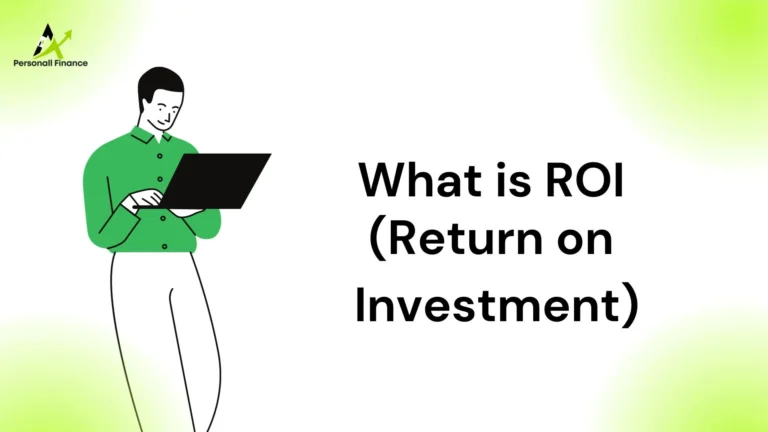Introduction
The term IPO,” or initial public offering, has become quite popular in the frantic world of finance. An initial public offering (IPO) announces a company’s entry onto the stock market and allows the public to invest in and take part in its growth.
This guide attempts to explain the concept of IPOs, exploring their types, processes, advantages and disadvantages, and the regulations that control them in the Indian stock market.

Table of Contents
ToggleWhat is meaning of IPO
The process through which a privately owned company becomes a publicly traded company by making its shares available to the general public is known as an initial public offering, or IPO. This tactical move not only injects money into the business but also gives investors the chance to buy a share of ownership and trade shares on the stock exchange.
Types of initial public offering (IPO)?
In the Indian stock market, there are primarily two types of initial public offerings (IPO):
1. Book Building IPO:
The most common IPO in India is this one. A price range within which investors can bid for shares is established by the company and its underwriters in a book-building IPO. Within this range, investors made offers for the shares at various prices. Following that, the demand and received bids are used to establish the final issue price.
2. Fixed-Price IPO:
In a fixed-price IPO, the company sells its shares to investors for a set amount. This cost is established by the business and is detailed in the Draft Red Herring Prospectus (DRHP). Investors have the option to apply for the IPO shares at the set price.
These IPO types give companies flexibility in raising capital and allow investors to participate in the growth of promising businesses. Each type has its own advantages and considerations for both companies and investors
How the initial public offering (IPO) Works?
1. Preparation: The company that wants to go public works with investment banks, underwriters, and legal advisors to prepare for the IPO. This involves evaluating the company’s financials, business model, market positioning, and growth prospects.
The company also files a draft red herring prospectus (DRHP) with the regulatory authority (in India, it’s the Securities and Exchange Board of India, SEBI).
2. Due Diligence: The regulatory authority reviews the Draft Red Herring Prospectus (DRHP) to ensure that all necessary information is provided to potential investors. The company and its advisors work to address any concerns or questions raised during this process.
3. Pricing: In the case of a book-building IPO, the company and underwriters determine a price range based on market conditions and investor demand. In a fixed-price IPO, the company sets a specific price at which it will offer the shares to investors.
4. Roadshows: The company’s management and underwriters conduct roadshows to promote the IPO to potential institutional investors. These roadshows provide an opportunity to present the company’s financials, growth strategy, and other relevant information to attract investor interest.
5. Subscription: During the subscription period, investors submit bids for the shares. In a book-building IPO, investors can bid at various price levels within the specified range. The demand for shares is aggregated, and the final issue price is determined based on investor bids.
6. Allotment: After the subscription period ends, shares are allotted to investors based on their bids and the final issue price. Allocation may be subject to some standards to ensure fair distribution.
7. Listing: Once the shares are allotted, the company’s shares are listed on the stock exchanges like (NSE) and (BSE). On the day of listing, the shares become tradable for all investors. The listing may involve an opening price that can be different from the IPO price due to market demand and supply.
8. Post-IPO: The business is examined by the public market after being listed. Shareholders and market analysts keep tabs on the company’s activities, finances, and strategic choices. The business must also consistently publish its financial results.
An IPO is a complex process involving legal, financial, and regulatory considerations. It provides companies with the opportunity to raise capital, increase visibility, and enable liquidity for early investors and employees.
At the same time, investors gain the chance to invest in promising companies and potentially benefit from their growth in the public markets.
What is Benefits of a initial public offering (IPO)?
Going public through an initial public offering (IPO) offers several benefits to companies. Here are some key advantages:
1. Access to Capital: Companies receive a significant inflow of money as a result of IPOs. This cash may be used for a variety of things, including growing operations, investing in R&D, paying off debt, purchasing other businesses, or supporting new project..
2. Liquidity for Investor: IPOs provide liquidity to existing shareholders, including founders, employees, and early investors. .They can sell their shares on the public market, allowing them to see the value of their investments.
3. Employee Incentives: Publicly traded companies often use stock options and other equity-based rewards to retain talented employees. This aligns employee interests with the company’s performance and growth.
4. Valuation and Exit Strategy: IPOs offer a transparent and market-driven valuation for the company. Founders and early investors can use the IPO as an exit strategy to monetize their investment and realize profits.
5. Access to Future Capital: Being publicly listed can make it easier for a company to raise additional capital through secondary offerings, such as Follow on Public Offer (FPO) or debt issuances.
Disadvantages of a initial public offering (IPO)?
1. Costs and Compliance: The process of preparing for an IPO and meeting regulatory requirements can be expensive and time-consuming. Companies need to allocate resources for legal, financial, and accounting expenses, as well as ongoing compliance costs after listing.
2.Loss of Control: Going public often results in dilution of ownership as new shareholders, including institutional investors, come on board. Founders and existing shareholders may have to give up some control over company decisions.
3. Market Volatility: After listing, a company’s stock price can be subject to significant fluctuations due to market sentiment, economic factors, or company-specific events. This can affect investor confidence and the company’s valuation.
4. Short-Term Focus: Publicly traded companies may face pressure to deliver short-term financial results to meet quarterly expectations, potentially compromising long-term strategic decisions.
5. Market Dependency: A company’s success can become heavily dependent on stock market performance and investor sentiment, which might not always reflect its true business fundamentals.
Rules and Regulations of the initial public offering (IPO)?
SEBI (Issue of Capital and Disclosure Requirements) Regulations, 2018: These regulations lay down the framework for conducting IPOs in India. They cover various aspects, including eligibility criteria for companies, disclosures to be made in the prospectus, pricing of the issue, allotment of shares, and listing on stock exchanges.
1. Disclosure and Due Diligence: Companies are required to provide accurate and comprehensive information about their financials, business operations, risk factors, and management in the prospectus. The prospectus serves as the primary document that potential investors use to make informed investment decisions.
2. Pricing Guidelines: SEBI sets guidelines for determining the price of IPO shares. For book-building IPOs, companies and underwriters are required to follow a price discovery process, and the final issue price is determined based on investor demand.
3. Promoter Contribution: Promoters of the company are required to contribute a minimum percentage of the post-issue capital as a part of the IPO. This ensures that promoters have a stake in the company’s performance post-listing.
4. Minimum Public Shareholding: Companies are required to maintain a minimum level of public shareholding after the IPO. This prevents excessive promoter control and enhances market liquidity.
5. Use of IPO Proceeds: SEBI regulations dictate that companies must use the IPO proceeds for the purposes stated in the prospectus. Detailed plans for the utilization of funds are required to be disclosed.
6. Lock-in Period: Promoters, certain pre-IPO investors, and other specified entities are subject to lock-in periods during which they cannot sell their shares. This ensures stability and prevents large, sudden sell-offs post-listing.
7. Registrar and Transfer Agent (RTA): Companies appoint an RTA to handle various administrative and operational aspects of the IPO, including processing applications, share allotments, and refunds.
8. Investor Protection Measures: SEBI regulations aim to protect the interests of retail investors. For example, a certain percentage of the issue is reserved for retail investors, and they often receive a discount on the issue price.
9. Listing Requirements: To get listed on stock exchanges, companies must fulfill the listing requirements of the exchange where they plan to list. These requirements include financial criteria, corporate governance standards, and reporting obligations.
It’s important for companies planning an IPO to adhere to these regulations to ensure a smooth and compliant IPO process. The regulations are designed to safeguard the interests of investors, maintain market integrity, and promote transparency in the Indian capital markets.
Conclusion of IPO and it details.
IPOs serve as an important bridge connecting companies with the public investment realm. This comprehensive guide has provided knowledge about the world of IPOs, shedding light on their significance, mechanics, benefits, and potential drawbacks. As the Indian stock market continues to evolve, understanding the dynamics of IPOs becomes an essential tool for both businesses and investors seeking growth opportunities
Frequently asked question of initial public offering (IPO).
An IPO (Initial Public Offering) is the first sale of stock by a private company to the public, allowing it to raise capital from external investors and become publicly traded.
SME IPO (Small and Medium Enterprise IPO) is a specific type of IPO designed for small and medium-sized companies. It provides them with a platform to raise capital and become publicly traded.
GMP (Grey Market Premium) in IPO refers to the price at which shares of an IPO are trading unofficially in the gray market before their official listing. It reflects market mood and IPO demand.
IPOs themselves are not scams. They are a legitimate way for companies to raise capital and for investors to buy shares in growing businesses. However, like any investment, there are risks associated with IPOs, and investors should exercise caution and conduct due diligence.
LIFE INSURANCE CORPORATION OF INDIA (LIC) had India’s largest initial public offering (IPO).



